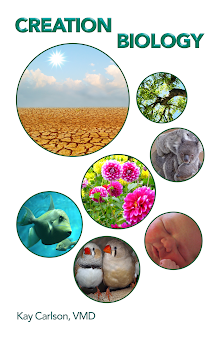The discussion starts with several questions to Professor Peter Schuster who had given one of the presentations. He is asked about the large leap organisms would have to take by evolution if totally materialistic, naturalistic evolution were true.
Schuster tells about one of the first leaps after Origin of Life that organisms would have to take--the change from simple bacteria that live without oxygen (anaerobic) to a cell that does use oxygen (aerobic). He tells about a global increase of oxygen in Earth's atmosphere. He says, "evidently a species of bacteria developed that was able to deal with oxygen, and that species made its way into our cells as mitochondria" (110).
Though there is much more content in the book, I must stop right here to comment. And, I'll add that I won't be covering the whole book, since I'd like to go on to other things. I hope I will have given enough of an overview by the end of this entry that you can decide whether it is within the scope of your own interests to read Creation and Evolution.
In his presentation, Peter Schuster did all in his power to make evolution sound easy, and even states it is adequate to explain all life (58). But he glosses over the tremendous changes needed in the organism to do so. Later in the book, Fr. Paul Erbrich brings him to task with questions and comments about the complex mechanisms needed for life (147-149). Erbrich talks about the mutational doubling of the gene, a favorite crutch of evolutionary explanation, as being inadequate to produce new information needed for things such as photosynthesis (147). He cites the complex structures of ATP as being incapable of formation by (other physical) mechanisms alone (149).
Indeed, there are many new structures and pathways needed for evolution from an anaerobe to an aerobe for which Schuster's comments are inadequate. Michael Behe, in his book The Edge of Evolution (Free Press, 2007) lists a few: "The innovations include such fundamental features as sexual reproduction (meiosis and recombination), the organization of DNA into chromatin, and the provisioning of a cellular protein 'skeleton'" (Behe, 172). All these take tremendous amounts of new information. Behe shows that Darwinian evolution is not up to the task given the amount of time in which the changes would have had to take place.
Pope Benedict XVI, who joins the discussion toward the end, reasons that evolution can’t be tested experimentally because “we cannot bring 10,000 generations into the laboratory” (162). Unfortunately, Benedict is incorrect in this assessment—a paper was just released by a group of scientists from Michigan State University that have been following the genetic activity of E. Coli for over 40,000 generations: Blount, et al, “Historical contingency and the evolution of a key innovation in an experimental population of Escherichia coli.”, PNAS, 105, 23 (June 10, 2008): 7899-7906. Actually, Schuster had mentioned this study but he puts a different "spin" on it than Behe would have. Schuster makes evolution sound like a fact, while the scientific evidence is showing more and more information against evolution. (2019 Update: Michael Behe writes about the Michigan State study as backing his own conclusions of major limits to natural evolution HERE). Though Schuster is no doubt successful in his own scientific areas of expertise, the undercurrent of dissenting opinion from the other participants in my opinion is not well-answered by him.
The Pope thinks the question of evolution belongs to philosophy, which as I wrote in the last entry is where Cardinal Schönborn puts it. Benedict, like Cardinal Schönborn, has a sense of the design of nature. A good quote from the book, I think, is from our Pope. He gives a great answer to the “God of the Gaps” argument that continues to come up in discussions between science and religion. Those who talk about God creating certain things are accused of cutting science short—that God explains a phenomenon until scientists discover the “real” reason for its existence. The Pope talks about questions that remain open, and then says, “Not as if I wanted now to cram the dear Lord into these gaps: He is too great to be able to find lodgings in such gaps” (161).
The Pope thinks that although science has discovered great things, its "findings lead to questions that reach beyond its methodological principles and cannot be answered within science itself" (163). The Pope ends in the same place as Cardinal Schönborn, with theology. He addresses the "component of terror" with which we are faced in the brutality of nature:
Here philosophy calls for something more, and faith shows us the Logos,who is creative reason and who incredibly at the same time was able to become flesh, to die and to rise again (174).






Very nice job man.Its today only that from one of your other post I got a link to one of your fiction mystery story which was available free.I read only 2 pages but bookmarked for future read.Thanks
ReplyDelete